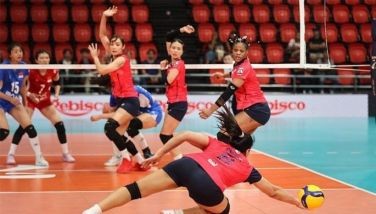A week of mourning
This week, the sporting world mourned several losses, and each one dimming the brightness of the community’s color. We remember those who have finished their race, and recount their contributions to our enjoyment of the raw humanity of sport.
International Olympic Committee honorary president for life Juan Antonio Samaranch passed away from cardio-respiratory failure in Barcelona, Spain this week. Samaranch, 89, was IOC president from 1980 to 2001, and reigned at a time of crucial transition for the Olympic Movement. His term started with global political tension and an exchange of boycotts between the United States and the former Soviet Union. But perhaps one of the things that Samaranch was most responsible for was leading the Olympic Games into worldwide prominence and an era of economic prosperity. Before his ideas took hold, countries that hosted the Summer and Winter Olympics were left holding the bag, weighed down by enormous financial debt from infrastructure that served them during the magical 16 days of competition, but became white elephants after all the athletes, spectators and media went home.
Working with Los Angeles Olympic Organizing Committee head and former Major League Baseball commissioner Peter Ueberroth, Samaranch opened the gates for global sponsors, instead of burdening national federations or individual sports’ international federations with the responsibility of finding advertising moneys. Thanks to Samaranch, Ueberroth was able to sign a huge television contract for the 1984 Summer Games, and turn around and get sponsors to build venues for him.
This blueprint became the working model for another achievement by Samaranch: The Olympic Program (TOP). Instead of entering agreements with sponsors only when the Games were approaching, the IOC allowed corporations the global use of the Olympic brand for four years, a full Olympic cycle. This kept the revenue streaming in, and helped ease the strain on keeping the Olympics in the public eye. The increasing media exposure Samaranch guaranteed the IOC caused the number of participating athletes to increase in every Olympic Games during his term.
Ironically, Samaranch himself was displeased with the over-commercialization of the Summer Games himself in Atlanta in 1996, the centennial of the modern Games. Although he was no longer IOC chief in 2002, he was investigated then eventually cleared of any wrongdoing in the bribery scandal in the bidding for the Winter Olympics in Salt Lake City, Utah.
Of course, a more immediate connection was the death of former world lightweight champion Edwin Valero, allegedly by his own hand. Valero, once described by WBO welterweight champion Manny Pacquiao as someone fighting tricycle drivers, became a friend and guest of the Filipino icon later on. The undefeated Valero painted two opposing pictures of himself. One was the drug-sniffing, wife-beating hooligan who threatened strangers who came to his wife’s aid, and the other the cheerful, funny, simple fellow who was fiercely loyal to Venezuelan president (and fellow firebrand) Hugo Chavez.
Valero won all 27 of his fights by knockout, and frantically chased recognition in a division in transition. Practically all the big-name fighters in his class had been beaten or drawn up to higher weight divisions by Pacquiao, and he wanted a piece of the action. El Inca (sometime called “The Liquidator”) enjoyed life intensely, but was probably not ready for the immense pressures of the fight game. His frustrations mounted as a result of a motorcycle accident in 2001 which left a blood clot in his brain and made him ineligible to fight in most states in the US. This situation caused big opportunities to pass him by, as well.
On March 25, his wife, Jennifer Carolina, was treated for injuries she claimed resulted from falling down a flight of stairs. It was the third time she had been admitted for such injuries. This week, Valero was arrested after allegedly confessing to murdering her, and supposedly hanged himself to death with his own clothes in his jail cell at the age of 28. Another reminder of how we can come so close to the life we dream of, and in an instant of despair, lose all hope of saving it.
Striking even closer to home was the sudden death of former PBA point guard Ric-Ric Marata at the age of 45. Marata was part of a huge wave of Visayan players who made an impact on the PBA in general and the RFM franchise in particular. Ric-Ric always led with his gut, going for what was often dramatic, and many times, succeeding. He always had a bounce in his step, and a smile on his face. Despite being only 5’7” or so, he was lightning-quick.
I remember as a reporter just starting out, covering the PABL All-Star Game in Baguio City in 1987 or 1988, and trying to shoot the game myself. Marata, for some reason or another, was always in motion, so speedy that I had to take my eye off the viewfinder several times so I could see where he was on the court. Ric-Ric was always exciting and unpredictable, both exciting for the fans and maddening for coaches.
He was part of what is arguably the richest draft in PBA history, the 1989 batch that included two-time PBA MVP Benjie Paras, long-time teammate Nelson Asaytono, and Bong Alvarez.
Lastly, I would like to send my sympathies to the family of Manila Bulletin assistant sports editor and Sports Digest editor Willie Caballes, who also left us at the age of 56. I remember when I was starting out, Willie was one of the first sportswriters I felt accepted by and comfortable with. When tennis was not one of my strong suits, I found him open and willing to give pointers. That’s not something I will ever forget. Whenever some of my juniors in the profession ask me questions, I often remember Willie. He always had the easy-going sense of humor that placated everyone around him.
It’s times like these when I think the Lord must envy us the company we’ve kept.
- Latest
- Trending



























